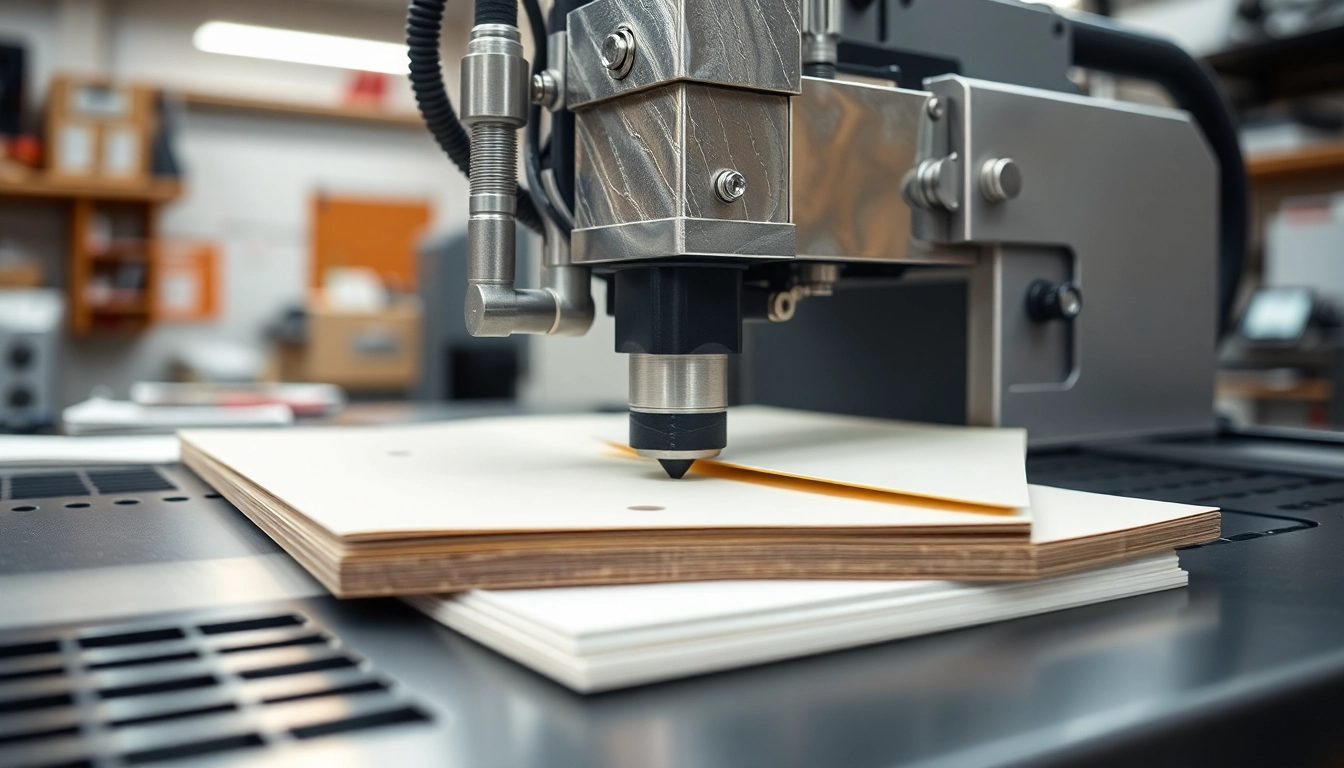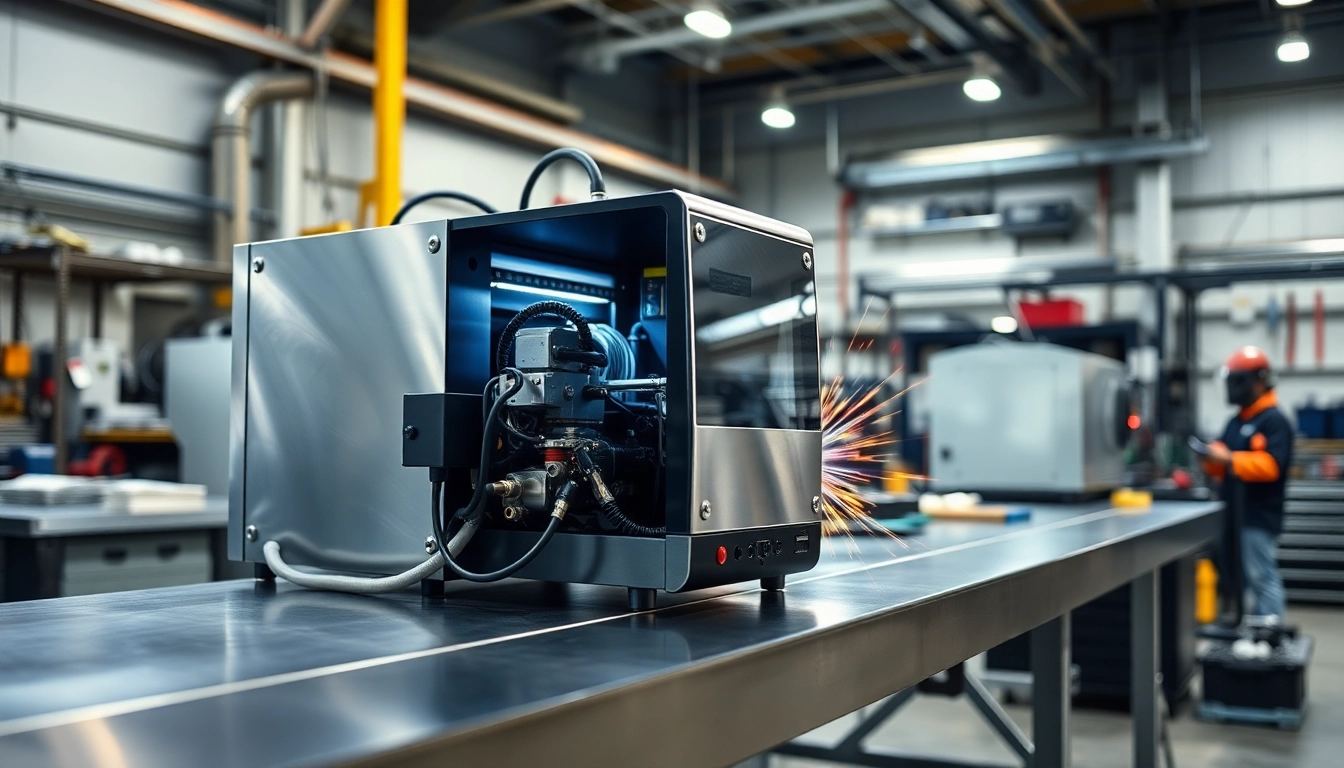Understanding Precision Die Cutting
What is Precision Die Cutting?
Precision die cutting is a manufacturing process that utilizes sharp, custom-made blades called dies to cut through various materials into specific shapes or sizes, with high levels of accuracy and repeatability. This technique stands out for its ability to handle a broad range of applications, from creating intricate parts for electronics to producing high-volume packaging components. The precision aspect emphasizes the minimal tolerance levels maintained during the cutting process, usually within +/- 0.005 inches. This degree of accuracy is crucial in industries where components must fit seamlessly within assemblies or systems.
Applications of Precision Die Cutting
The versatility of precision die cutting allows it to be utilized across diverse sectors, including:
- Aerospace and Automotive: Manufacture of critical components like gaskets, seals, and insulators, where failure could result in catastrophic outcomes.
- Medical Device Manufacturing: Production of precise parts such as sutures, surgical pads, and custom molds for implantable devices.
- Electronics: Cutting components such as foam inserts, insulation materials, and custom-shaped adhesives for circuit boards.
- Packaging: Creation of prototypes and production runs for boxes, labels, and other packaging materials.
Benefits of Precision Die Cutting in Manufacturing
IMPLEMENTATION of Precision die cutting enhances production capabilities in numerous ways. The key benefits include:
- High Accuracy: Precision die cutting delivers exact shapes and sizes, reducing waste and ensuring quality standards are met.
- Cost-Effectiveness: Although initial setup costs may be higher, the ability to produce large quantities efficiently often leads to lower unit costs over time.
- Versatility: Capable of cutting a wide array of materials, including metals, plastics, and composites.
- Speed: Automated die cutting processes significantly reduce production times, enhancing overall throughput.
Types of Die Cutting Techniques
Flatbed vs. Rotary Die Cutting
Understanding the different die cutting techniques is crucial for selecting the method that best fits your needs:
- Flatbed Die Cutting: This method uses flat cutting dies that press down onto a material, creating the desired shapes. While flatbed die cutting is ideal for smaller runs and intricate designs, it typically requires longer setup times, making it less efficient for larger production volumes.
- Rotary Die Cutting: In contrast, rotary die cutting involves cylindrical dies that cut the material as it passes through a rotating press. This process is more efficient for high-volume production runs and allows for continuous operation, making it suitable for producing labels, packaging, and other large quantities.
Laser Die Cutting: A Modern Approach
Laser die cutting employs highly focused laser beams to cut materials, offering unparalleled precision and flexibility. This technique is particularly advantageous for complex designs or when working with materials such as plastics and thin metals. The benefits include:
- Minimal Material Waste: Lasers accurately cut shapes, leaving little to no scrap material.
- No Tooling Costs: Since the process doesn’t require physical dies, it significantly reduces upfront costs for prototype creation.
- Improved Flexibility: Design changes can be implemented rapidly, making it an attractive option for industries that require constant innovation.
Choosing the Right Die Cutting Technique for Your Needs
When selecting a die cutting method, it’s essential to consider factors such as:
- Production Volume: Flatbed die cutting may be more suitable for small batches, while rotary techniques excel in high-volume production.
- Material Type: Different materials respond differently to various cutting methods; selecting the appropriate technique ensures optimal results.
- Design Complexity: For intricate designs, laser cutting may offer the detailed precision required.
Key Considerations in the Precision Die Cutting Process
Understanding Material Tolerances
Material tolerances are critical for ensuring the integrity and functionality of die-cut parts. Depending on the material used, tolerances may vary. For example, metals and plastics often possess tighter tolerances compared to fabrics or foams. Understanding how these tolerances affect the overall design is vital for achieving the best results and minimizing defects.
Design Considerations for Precision Die Cuts
Effective design is a cornerstone of successful die cutting. Key aspects include:
- Clear Specifications: Define precise dimensional and tolerance requirements to facilitate accurate die creation.
- Material Selection: Choose materials that are compatible with the chosen die cutting method while meeting performance requirements.
- Mock-Ups and Prototypes: Building prototypes can identify potential issues early in the design phase, allowing adjustments before mass production.
Cost Factors and Budgeting for Die Cutting Projects
Understanding the cost elements involved in precision die cutting can help organizations budget effectively. Factors to consider include:
- Tooling Costs: The cost of creating custom dies can be significant, particularly for complex components.
- Material Expenses: Choose materials wisely to balance quality and budget.
- Production Volumes: Higher volumes can lead to lower per-unit costs, which can be a critical factor in overall pricing.
- Labor Costs: Assess the total hours required for setup, maintenance, and quality control.
Best Practices for Precision Die Cutting
Optimizing Your Die Cutting Workflow
Enhancing the precision die cutting workflow can lead to significant improvements in efficiency and output quality:
- Invest in Quality Tools: Choosing high-quality dies and machinery ensures better performance and longevity.
- Implement Automation: Automated systems can streamline processes, reduce labor costs, and enhance consistency.
- Standardize Procedures: Standard operating procedures for each stage of the cutting process can help eliminate variability and improve reliability.
Quality Control Measures in Die Cutting
Establishing robust quality control practices is essential for maintaining product integrity:
- Regular Calibration: Machines and tools should be frequently calibrated to ensure they meet specified tolerances.
- In-Process Inspections: Performing spot checks during the cutting process can catch deviations early.
- Final Audits: Comprehensive inspections of finished products ensure they meet client specifications prior to delivery.
Common Mistakes to Avoid in Precision Die Cutting
Many pitfalls can derail the die cutting process. Avoid these common mistakes:
- Neglecting Design Optimization: Failing to optimize designs can lead to increased waste and costs.
- Ignoring Material Limitations: Using materials that do not align with the chosen cutting method can result in poor outcomes.
- Overlooking Maintenance: Regular upkeep of machinery is critical to prolonged performance and efficiency.
Future Trends in Precision Die Cutting
Technological Advancements in Die Cutting
The die cutting industry is on the brink of a technological revolution driven by advancements like:
- Enhanced Automation: Increased use of AI and robotics is streamlining the cutting process, improving accuracy, and reducing labor costs.
- Integration with Design Software: Advanced software solutions enable seamless transitioning from design to production, minimizing errors during the setup.
- Smart Manufacturing: IoT (Internet of Things) technology facilitates real-time monitoring of production lines, enhancing efficiency and responsiveness to demand changes.
Sustainable Practices in Precision Die Cutting
Environmental concerns are increasingly influencing production practices. Future trends toward sustainability include:
- Eco-Friendly Materials: The use of biodegradable or recyclable materials is becoming more prevalent.
- Waste Reduction Strategies: Techniques to minimize scrap and excess material are in high demand, often incorporating nesting algorithms in design software.
- Energy Efficiency: Investing in energy-efficient machinery and processes that consume less energy without compromising output.
The Future of Custom Die Cutting in Various Industries
The customization trend across industries is likely to significantly shape the future of die cutting. Industries are moving towards tailor-made solutions to meet diverse customer needs, providing opportunities:
- Personalization: As consumer preferences shift towards unique, personalized products, die cutting technology will adapt to accommodate small, custom orders alongside larger runs.
- Rapid Prototyping: The ability to produce prototypes swiftly through die cutting will enhance innovation in product design and development.
- Integration with Other Technologies: Combining die cutting with 3D printing and other technologies may yield new products and solutions previously deemed impossible.



